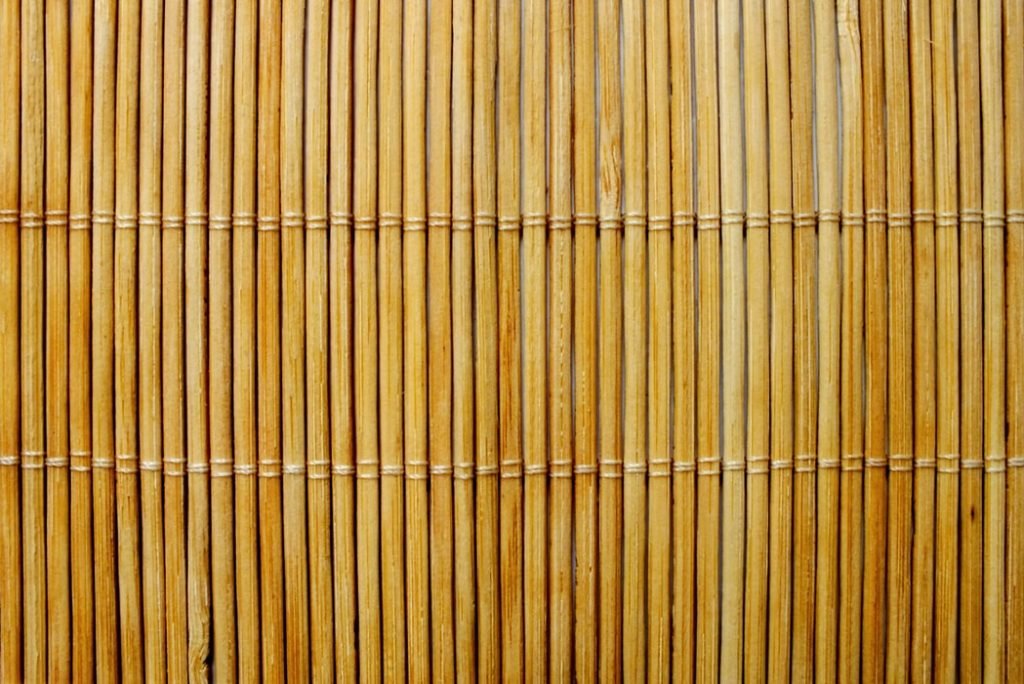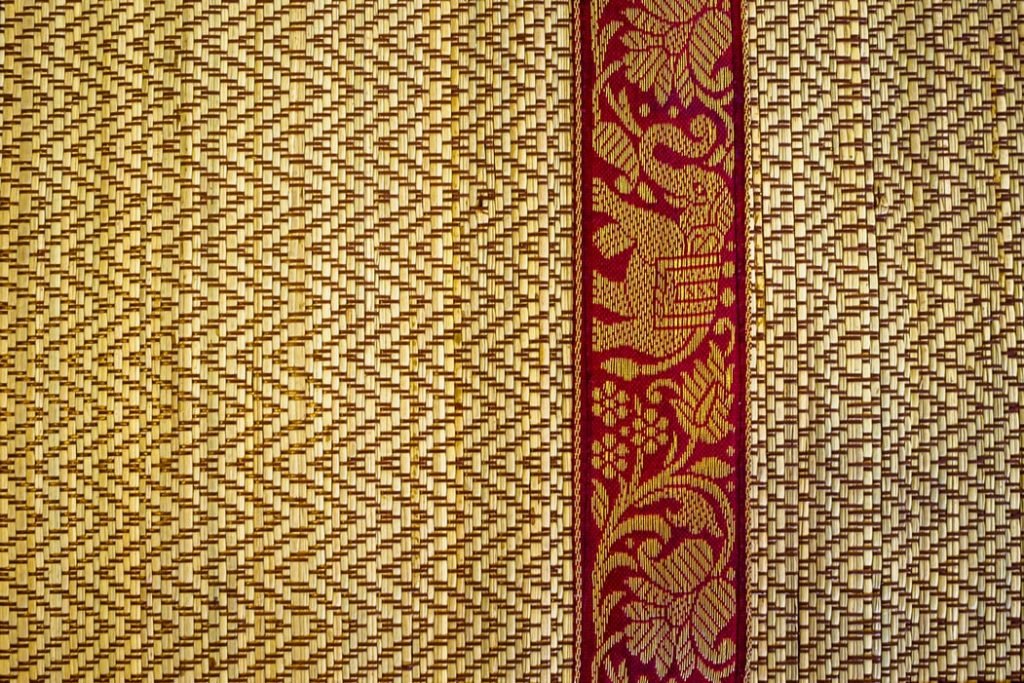Bamboo Mats For Beach: What To Know!
0Shares
Are you one of the increasing number of customers searching for ways to bring ‘green goods to your home? You will find that bamboo is a valuable resource that lowers reliance on diminishing wood supplies, is natural plant material, supports the ‘green’ climate, and reduces the environmental effects on its production. Bamboo mats for beach are great options for people who are looking for sustainable mats they can use anywhere.
Of course, bamboo mats’ eco-friendly feature is incredibly significant, whether you’re committed to a green lifestyle or not. Crafted from one of the most durable and natural fabrics, bamboo mats and chair mattresses are made to last, and everything practicable is done in their production to not harm the earth. Bamboo carpets are also incredibly easy to vacuum and maintain.
Bamboo Mats For Beach: How To Weave It

Create your mats out of regenerative bamboo! Bamboo has been rising worldwide and has been used as a natural resource by Eastern cultures for centuries. A hardy plant that grows rapidly, bamboo needs little supervision.
Bamboo Mats For Beach: Preparing
Let’s start preparing the mats.
Phase 1
Saw the thickness of the bamboo.
Phase 2
Run your knife down the length of the bamboo, then gently scrape the blade upward, draw the green skin off. Repeat until the skin is fully separated from the entire shaft.
Phase 3
Break the end of the saw until it is smooth and flat. The top and bottom of your bamboo shaft should be smooth.
Phase 4
Break the shaft into slivers of the same dimension with the knife. Each slider should be as smooth as possible and of equal length. When the slivers have been removed, compare them to each other and, if necessary, cut them down until they are of equal width.
Phase 5
Keep the sliver 1 inch away from the tip. Cut one-third of the way down on the tip, then rotate the knife to break the strip from the sliver.
Phase 6
Peel the strip gently and repeat, holding the strips the same thickness. Order the strips by color and allow them to dry for at least a week.
Bamboo Mats For Beach: Weaving The Mat
Let’s move forward to weaving the actual bamboo mats for beach.
Phase 1
Take the nine strips and lay them down vertically. Place the steel rod on the end that is nearest to you and weigh it down.
Phase 2
Weave additional bamboo strips in vertical strips horizontally. Using the under/over weave, with each horizontal strip under the first vertical strip, then over the next strip. When you weave, pull each additional strip closely to your neighbor, leaving as little room in the weave as possible. Alternate the pattern for each strip; if the first horizontal strip starts under the first vertical strip, then the second strip can commence above the first vertical strip.
Phase 3
Weave more vertical strips into the mat to stretch, if necessary. When you weave, you’ll find that the horizontal stripes form the foundation of the rest of the mat. Repeat the under/over pattern to form the body of the pad.
Phase 4
Set the torch to a low, hot flame and run it across the mat multiple times, covering the whole field. This removes any splinters or uneven spots.
Phase 5
Trim any excess bamboo around the perimeter of the mat with scissors. Apply the lacquer coat to the mat; layer too many coats for safety. Enable the lacquer to dry between the coats for a few hours.
Use the torch only in a protected work environment since it is incredibly dangerous. Push the flammable material away safely and have a fire extinguisher available.
Bamboo Mats For Beach: Why Prefer Bamboo Mats Over Conventional Mats And Rugs?

Creating a Zen-inspired living space in your home may entail a bit of renovation, particularly if your room contains conventional carpeting. It’s not that a room cannot be Zen-like with regular mats, so it’s customary to use more recycled fabrics. Many Asian homeowners forgo carpeting completely in favor of hand-woven tatami mats or hardwood floors, but there’s another common floor covering – bamboo mats. If you’ve never seen a bamboo mat, don’t worry. They are not considered mainstream in the United States but are often used in bedrooms as a small area mat near the futon.
Bamboo mats with relaxed furniture can also be used as accent mats. When considering bamboo mats for your house, it’s important to look for high-quality mats from a reputable manufacturer. Properly crafted, these mats can last for years and years. Bamboo mats Compared to traditional mats, bamboo is easier to clean and maintain. People who have long-haired dogs are also annoyed with how often they need to clean because their mats appear to be “hair magnets.” Bamboo mats do not absorb hair in the same manner as conventional mats, so they do not hold static electricity.
They look rich, easy to clean, and most have a lovely fabric border to keep the edges safe.
More Information
If you’re looking for an organic mat that coordinates well with every piece of furniture, bamboo mats are a perfect choice. They are available in several different sizes, and the colors vary from pale natural wood to dark brown. On the mat seen here, the sustainably grown bamboo slats are kiln-dried and decorated with natural features. Coordinated accent stitching in gold and brown complement the bamboo slats, and the mat is finished with a chocolate brown border to complete the look.
Natural organic elegance is the trademark of this distinctive bamboo mat. Its rich honey tone provides the ideal accessory to finish every room or office. The ventilated non-slip felt backrest holds the mat in place and offers supportive cushioning while enhancing the mat’s life.
Bamboo Mats For Beach: How To Clean The Bamboo Mat

Bamboo mats, commonly used in Asian cultures for many decades, have rightly attracted many devoted followers over the years. They are a perfect carpeting alternative during the hot months and make excellent summer outdoor mat options for their calm, relaxed feeling on the legs (unexpectedly soft, too) even when the sun is shining. They can also be used as decoration items to help improve the interior decor, liven up a bland room, and give any space a more naturalistic feel. Today when it comes to cleaning and preserving the biggest member of the grass tribe, here are few ideas to make your life a lot simpler.
1. Shake It
A gentle shaking from time to time will be enough to keep your bamboo mat fresh. You don’t have to make too much effort to, say, beat a tennis ball or a broomstick to the mat. Only a gentle shaking will help to dissipate debris and soil. Another factor why we enjoy bamboo mats and use them as welcome mats in the entrance areas!
2. Vacuum It Up
As for every indoor or outdoor mat, vacuuming bamboo mats regularly helps keep them looking fantastic for a long time to come. This also refers to large bamboo mats that are difficult to pick and shake off the mud. Ensure that you make many passes over the mat with your vacuum cleaner and alternate directions to remove as much residue as possible. Note also that it is much more preferable to use a suction attachment instead of a beater brush to prevent scraping the mat’s surface.
3. Clean It Up
Bamboo mats are typically coated with polyurethane, which helps shield them from scratching and stains. Accidents, though, will happen as well – albeit very rare.
We all know that the faster you deal with a spill or a stain, the better the outcomes will be. If you allow a spill to be put in the mat’s base (any mat), cleaning it automatically becomes even more difficult and, in some situations, almost impossible. So if your bamboo mat is spilled, blot the substance until the contaminated area is dry, and then use an old cloth or rag that has been dampened with warm water to get rid of the residual traces. It doesn’t take anything more than a few minutes to get it back to its great-looking state.
Now, if you need to clean your bamboo mat after extended or outside use and/or heavy foot traffic, shake it or vacuum it to remove dirt, clean the surface with a clean, moist rag, and use a water-and-mild-soap solution to clean the borders.
Finally, if you need to extract clay, gum, or any other solid substance that can damage your mat’s natural fabrics, use a spatula or a spoon with a hard edge to carefully scrape the material out of the infected area. When removed, any trace with a dampened rag may be removed.
4. Protect It Now
If you have chairs or a table on bamboo flooring (bamboo slats fixed to the floor joists), you might have used felt or plastic casters on the legs of the furniture to prevent the bamboo slats from breaking and scraping from the rough, straight edges of the chair or table.
For a bamboo mat, you don’t need to think about it because most bamboo mats are dried and carbonized to further improve their longevity and power. Plus, bamboo fibers are much tougher than wood fibers (and coated with synthetic material for added protection against mold and mildew). It is extremely doubtful that you would see a bamboo mat with divots or cracks in continuous motion, shifting weather conditions, or the weight of a large chair.
However, if you use a bamboo mat as an outdoor mat, be sure to rotate it frequently, particularly if it is located in a sunny spot. Extended exposure to sunlight can cause some degree of fading to every form of mat, even bamboo.
Finally, if your bamboo mat comes with a natural fiber backrest, make sure it remains dry avoids rot and mold problems. In this case, always verify that the mat is dry before you roll it for storage and avoid using it in places where it could be saturated with water (i.e., rain).
Final Words
A bamboo mat does a fantastic job of adding to your ambiance, looks elegant, and requires great investment, particularly if you’re looking for green options in every area of your life. If you have beautiful patterns woven with bamboo or blended with natural fibers, your bamboo mat will last a long time with careful care, which, luckily, does not require much at your end.
0Shares
